Plants For A Forest Garden – Herbaceous Plants
Beneath the tree layers and shrub layer you will find a dense, lush herbaceous layer in a forest garden. This layer is planted for the benefit of the trees above but can also be a rich source of food and other useful things. Here is a little more information on some of the plants that you might expect to find in the herbaceous layer of a forest garden:
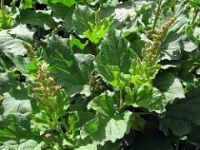 Food Crops:
Food Crops:
A forest garden can be an incredibly diverse and productive ecosystem and there are many low maintenance herbaceous plants that will do well in a forest/ forest glade environment. The herbaceous layer in a forest garden can contain many perennial vegetable crops, which will provide a good quantity of food. These include a range of options in the brassica family, including brassica oleracea, nine star 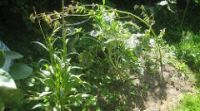 perennial broccoli and perennial kales for almost year-round greens. Good King Henry, fat hen, nettles, plantago major, hostas, chard, sorrel, and many others add to the variety. Alliums also have a place in this layer, from shallots, to perennial onions, chives and garlics. Root vegetables, both familiar and less familiar, also find their place. Parsnips and carrots, beetroot and other similar crops and a range of less usual tuber plants are also good additions.
perennial broccoli and perennial kales for almost year-round greens. Good King Henry, fat hen, nettles, plantago major, hostas, chard, sorrel, and many others add to the variety. Alliums also have a place in this layer, from shallots, to perennial onions, chives and garlics. Root vegetables, both familiar and less familiar, also find their place. Parsnips and carrots, beetroot and other similar crops and a range of less usual tuber plants are also good additions.
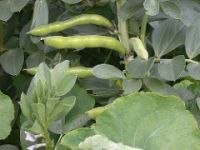 Dynamic Accumulators:
Dynamic Accumulators:
A range of beans and peas are used to add nitrogen to the soil in the herbaceous layer of a forest garden. Other nitrogen fixing plants such as lupins can also find their place here. Meanwhile, other dynamic accumulators such as comfrey, yarrow, borage and dandelions bring nutrients up from deep in 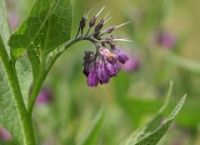 the soil which can then be returned to the soil surface to the benefit of surrounding herbaceous plants, shrubs and trees.
the soil which can then be returned to the soil surface to the benefit of surrounding herbaceous plants, shrubs and trees.
Other Useful Herbaceous Plants:
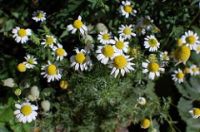 A wide range of flowering plants found in this layer of a forest garden will help to attract bees and other pollinators to the forest garden and will help the garden to stay productive. Many others will help by repelling certain pests, or by attracting beneficial insect predators. A range of culinary herbs can often aid in strengthening your garden ecosystem, while flowers on forest borders that bloom throughout the season will keep the garden looking good but also keep it functioning as it should. A number of other plants found in the herbaceous layer have traditionally been used in herbal medicine, while others may be used for dyes, cosmetics, or for a wide range of other purposes.
A wide range of flowering plants found in this layer of a forest garden will help to attract bees and other pollinators to the forest garden and will help the garden to stay productive. Many others will help by repelling certain pests, or by attracting beneficial insect predators. A range of culinary herbs can often aid in strengthening your garden ecosystem, while flowers on forest borders that bloom throughout the season will keep the garden looking good but also keep it functioning as it should. A number of other plants found in the herbaceous layer have traditionally been used in herbal medicine, while others may be used for dyes, cosmetics, or for a wide range of other purposes.